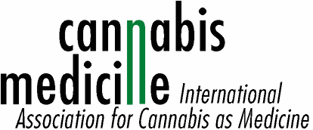IACM-Bulletin
27 September 2009
[International Association for Cannabis as Medicine (IACM)
>http://www.cannabis-med.org]
[International Association for Cannabis as Medicine (IACM)
>http://www.cannabis-med.org]
Am Mildenweg 6
D-59602 Ruethen
Germany
Phone: +49 (0)2952-9708571
Fax: +49 (0)2952-902651
Email: info@cannabis-med.org
Only a few days until the 5th IACM Conference. [Please find the
updated programme-> http://www.iacm2009.org]
1. Science: External therapy with cannabinoids effective in reducing
pain in patients with herpes zoster
Researchers at the Clinic for Skin Diseases at the University of
Muenster, Germany, investigated the efficacy of an external
treatment of chronic pain caused by herpes zoster with a
cannabinoid that activates cannabinoid receptors. In an open-label
trial, 8 patients with facial neuralgia in herpes zoster received a
cream containing the endocannabinoid palmitoylethanolamine. The
course of symptoms was scored with a visual analogue scale.
Five of 8 patients (62.5 per cent) experienced a mean pain
reduction of 88 per cent. The therapy was well tolerated by all
patients. No unpleasant sensations or adverse events occurred.
The authors concluded that “topical cannabinoid receptor agonists
are an effective and well-tolerated adjuvant therapy option in
postherpetic neuralgia.” This cream is already on the market in
Germany under the trade name “Physiogel A.I. Crème” used to
treat pruritus.
(Source: Phan NQ, Siepmann D, Gralow I, Ständer S. Adjuvant
topical therapy with a cannabinoid receptor agonist in facial
postherpetic neuralgia. J Dtsch Dermatol Ges. 2009 Sep 10.
[Electronic publication ahead of print])
2. USA: Medical cannabis law creates confusion in the State of
Washington
In one corner of the State of Washington, a 62-year-old
rheumatoid arthritis patient could face more than eight years in
prison for growing cannabis for himself and three others, while in
the town of Seattle a co-operation of growers serves 2,000 people
with little interference from police. This discrepancy is typical of
the confusion that has reigned since voters passed the medical
cannabis law more than a decade ago. A patient may possess up
to 15 cannabis plants and 24 ounces (680 grams) of dried plant
material.
Unlike some other states, Washington requires patients to grow
cannabis themselves or designate a caregiver to grow it for them.
But some patients are too sick to grow cannabis themselves and
don’t have the money to set up a growing operation. So they have
established collective grows or dispensaries – methods that are
making police and prosecutors increasingly uncomfortable. The
American Civil Liberties Union of Washington recently began
discussions with Seattle police over whether to limit the size of
cooperative grows. In Spokane this month, police shut down a
medical cannabis dispensary – the first such measure in the state –
and arrested the two owners. They warned a half-dozen other
dispensaries to close as well.
[
Source: Associated Press of 20 September 2009->http://hosted.ap.org/dynamic/stories/U/US_MEDICAL_MARIJU ANA?SITE=FLTAM&SECTION=HOME&TEMPLATE=news _generic.htm]
3. News in brief
The Netherlands: Coffee shops
On 15 September a Dutch judge rejected an application by six
coffee shops from two southern towns against their mayors’ plans
to stop them selling cannabis. The case had been brought before
the wrong court, said the judge. The mayors of Roosendaal and
Bergen-op-Zoom, both near the border with Belgium, announced
last year that all eight coffee shops in their borders would be
banned from selling cannabis from 16 September on to reduce the
number of cannabis-smoking tourists. (Source: Traveller of 16
September 2009)
Science: Post traumatic stress disorder
In a long-term study at the University of Pittsburgh, USA, with
693 adolescents who were included in the study at the age of 10
to 12 years and followed to the age of 25 years the presence of
post traumatic stress disorder increased the risk for cannabis use
disorder. Participants with traumatic stress disorder had a 13-fold
increase in risk for regular cannabis use. (Source: Cornelius JR, et
al. Addict Behav 2009 Sep 11. [Electronic publication ahead of
print])
Science: Multiple sclerosis
Research with the cannabis extract Sativex on patients with MS
presented already earlier in the IACM-Bulletin was now
presented at the congress of the European Committee for
Treatment and Research in Multiple Sclerosis (ECTRIMS) in
Dusseldorf, Germany, in September. In a phase III this trial with
572 patients “Sativex demonstrated a statistically significant and
clinically relevant improvement in spasticity and was well
tolerated in MS patients.” (Source: Press release by GW
Pharmaceuticals of 14 September 2009)
Science: Drop of blood pressure
Scientists at the Medical Faculty of the Charité in Berlin,
Germany, tested the hypothesis that high endocannabinoid
concentrations predispose to drop of blood pressure while
standing. However, they observed the contrary. Anandamide
plasma concentration at rest was directly correlated with better
resistance to drop of blood pressure during medical tests that
cause orthostatic stress. (Source: Schroeder C, et al. Clin Auton
Res 2009 Sep 15. [Electronic publication ahead of print])
Science: Pain
Scientists of the University of Sydney explained why cannabinoids
may increase acute pain while reducing chronic pain.
Endocannabinoids produced in the spinal cord can enhance pain
by dampening the synapses of inhibitory nerve cells. This pain-
promoting action of endocannabinoids wanes during the
development of chronic pain that is induced by inflammation or
nerve injury. (Source: Christie MJ & Mallet C. Sci Signal
2009;2(88):pe57.)
Science: Multiple sclerosis
At the department of neuroscience of the University Tor Vergata
in Rome, Italy, the effects of Sativex, a medication containing
equal amounts of THC and CBD, on 20 MS patients were
investigated. The cannabis extract failed to influence spasticity
and the excitability of the stretch reflex. Cannabis also had no
effect on the synthesis and the degradation of the
endocannabinoid anandamide, as well as on the expression of both
CB1 and CB2 receptors in lymphocytes, a type of white blood
cells. (Source: Centonze D, et al. Neurol Sci 2009 Sep 19.
[Electronic publication ahead of print])
[
More at the IACM-Bulletin archives->http://www.cannabis- med.org/]




 Creative Commons Attribution
Creative Commons Attribution